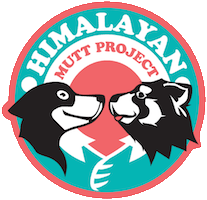Engaging Leaders in Conservation

Local conservationists play the biggest role in implementing and developing conservation strategies. When our field work ends, they are the ones that have the big job of translating our science into action! Above: Our team with community volunteers in Bhraka village. Many of the women in this photograph are a part of a local women's group and they have a big job of keeping their community engaged in the work we are trying to achieve on a daily basis.

Our work is focused in Nepal's Annapurna Conservation Area, where every resident has a conservation role to play. Our job is to help people see this role, and we do that by teaching but also through listening. What challenges are communities trying to overcome? How can we facilitate their daily wellbeing to support their efforts to care for wild and domestic animals? Above: Our team with community volunteers from Ngarwal village, who have been exceptionally proactive in looking out for the health of their dogs and supporting our work. This photograph was taken at the end of the monsoon season where many homes were busy making repairs after the massive rains drove any form of construction work to a halt. Even though many of them were very busy, they requested for us to organise this meeting in the night, so that they could complete their harvesting and repair work for the day. Residents have a very short window to complete their agricultural and maintenance work between the destructive monsoon season and the freezing winter season. We are very grateful and appreciate of their patience and enthusiasm!

We know that science alone will not solve our problems.
Our role is to catalyse science-based communication messages that are realistic and sensitive to cultural norms. Consistent and long-term engagement with the community allows us to get the feedback we need to conceive and create those messages. We take no short cuts with problem-solving! Much of where we decide to visit for our dog sterilisation and vaccination work is decided by the community! Where they call us to, we go! Some communities, like this one in Pisang, have also requested for cats to be neutered and vaccinated. We tell them that we cannot do this without their help - we need cats brought to us. They nod their heads in agreement. One of them announces loudly in English, "You bring doctors! We will help you!" Above: Community volunteers in the village of Pisang use these meetings as an opportunity to tell us how we can help them develop the skills they need to make their Himalaya better for people and animals!

An important part of our work is to engage local scientists and conservation managers. Nepal is a large country with diverse landscapes and wildlife. Our work in the Himalaya is relevant to conservation work in the tropical jungles of south Nepal, and the urban forests that surround Kathmandu - dogs and their pathogens are everywhere! Above: We speak to Nepal's leading conservation managers, wildlife biologists and veterinarians at the National Trust for Nature Conservation, the country's leading agency for wildlife and landscape protection.

Collaborations with the government and local communities will give us the strength we need to take our science and action into the future! We thank the communities and government offices who have supported our work for their time and commitment toward creating a healthier and safer Himalaya for people and wildlife.






















